Resources by James R. Wilson
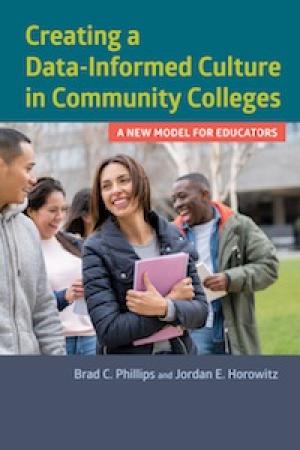
Armed with strong backgrounds in institutional research and effective educational leadership, Phillips and Horowitz provide educators with an excellent resource for improving academic success with proven data use strategies and practices for community colleges. A central, uniting focus of the book is the need for information to be contextual, “useful, useable, and actionable” (9), and the need to enlist the widest number of stakeholders within its ecosystem. Administrators, researchers, faculty, and staff are encouraged to be co-partners in cultivating academic excellence. Rather than placing data at the center, the authors advocate for a model that places “the use of data” at the center. The book is divided into three sections: (1) “A New Model for Data Use,” (2) “Putting the Model to Work,” and (3) “Case Studies of Data Driven Reform.” The first part outlines a new model for data use that is user-friendly, improves educational instruction, and maximizes student success, combined with intentional adaptation to those it serves. For example, “few educators want to [be] analysts; they want to be provided with useful information and assisted in applying it toward student success” (56). Attention is also given to analytics, behavioral economics, organizational theory and habits, and the role of emotion in decision making. In the second section, Phillips and Horowitz reveal a data use model that is put to work removing obstacles to student success. Specific consideration is given to leading and lagging indicators and the employment of backward mapping that begins with the identification of lagging indicators or goals. Attention is then refocused on the leading indicators that influence them, and which a college has the ability to control and reshape in proactive ways. Lagging and leading indicators have the ability to switch places from time to time. Scrutiny is also given to disaggregation and how different demographic subpopulations can impact the design of programs, services, and policies. The authors make use of a four stage, continuous improvement approach for use of educational strategies that moves from assessment, to planning, to implementation, to monitoring, and back again to assessment (110). They believe that data should be processed in manageable bites and reflect an institution’s unique cultural context and problem areas (176). When evaluating outcomes of particular programs or services, Phillips and Horowitz call for academic institutions to review all other policies and programs that may or may not have an impact, positively or negatively. When introducing data and discussing it educators need to make sure that the content is real, that they include moments of humor, that they engage with the data, and that it works towards a consensus in decision-making. Resistance is another key factor for community colleges to scrutinize. College staff often bring their “own history of belief and experiences to the process and accept only information that confirms those beliefs” (104). Helping people to move outside their comfort zones and embrace change can assist in creating a positive, data-informed culture. The last section provides actionable approaches and case studies drawn from community colleges from differing socio-economic and ethnic settings that intentionally choose to embrace a data-informed culture and foster proactive uses of information for student success. A failing institution was among the colleges examined – it had been on the verge of being shut down by state authorities because of dissatisfaction with its academic quality and student success. This book is more than a guide for interpreting data by academic researchers. It also provides a research-based, comprehensive, and practical approach for improving academic excellence in all areas, and amongst all segments of the college community. This book will help teachers of religion and theology to increase their classroom effectiveness – in lecturing and interacting with students.
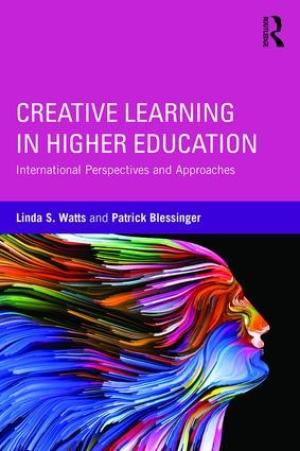
Creativity in higher education is oftentimes pigeonholed to certain academic disciplines or perceived as the property of select individuals with an artistic flair. Watts and Blessinger, through their well-crafted anthology, demythologize these and other constructs, by providing readers with a more comprehensive understanding of creativity as an accessible and proactive agent in higher education – past, present, and future According to Watts and Blessinger, “creative learning transcends individual capacities, disciplinary constraints, national boundaries, and institutional barriers” (217). Nonetheless, they also caution against assuming that it can be understood or practiced the same across cultures. Creativity in the classroom demands particularistic pedagogic approaches that reflect the institutional and cultural settings of those served (xvi). With a primary focus on higher education, the assembled chapter authors reflect different international and interdisciplinary perspectives and bring teaching techniques based on extensive research and experience. A central theme found throughout this book is that “If all students possess the potential for creativity, then teachers do well to consider how their instructional objectives, curricular designs, learning assessments, and institutional structures reflect that fact” (214). Within this anthology, the reader is provided with case studies and essays that cover a full range of subject content and pedagogic approaches in varied cultural settings – including “Play and 3D Enquiry for Stimulating Learning,” “A Case Study in Best Practices in Public Higher Learning,” “Creative Approaches to Stimulate Classroom Discussions,” and “Configuring Interdisciplinarity: The Common Core at the University of Hong Kong.” As a book, it exhibits a dynamic interplay between convention and innovation and reminds the reader throughout how creativity is deeply rooted in the pedagogic theory of all disciplines. It also challenges educators to “foster a climate and culture in which creative learning and teaching are promoted, supported, and valued; a culture that allows experimentation, new ideas, even failure – for what is failure if not an opportunity to learn?” (199). This book would be a useful resource for any educator regardless of their respective discipline. It helps us to remember that “learning creativity happens when inventive, imaginative, and physical methods are used to explore a subject and harness its practices to new partners” (120). And although the reader may not find each chapter as pertinent as the next, they are given access throughout to seminal texts and issues relating to creativity in higher education. The mantra of this book is – creativity is an activity in which anyone may engage in.
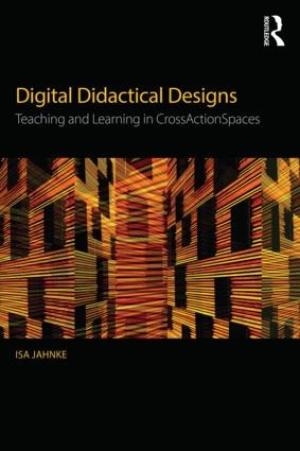
Digital Didactical Design is neither a step-by-step guide for developing educational curriculum, nor a compendium of creative teaching methodologies tweaked by the latest digital technologies. It is, however, a thought-provoking treatise aimed at educational institutions, teachers, and decision-makers in need of a better understanding of learning in a digital world. Readers are reminded that “instead of focusing too much on new technology-driven designs or content design” (13) attention should be placed on developing Digital Didactical Design that facilitates meaningful and deep learning. Equipped with research gathered in varied cultural and educational settings, Jahnke challenges educators to develop teaching methods that appeal to a variety of learning preferences that fall “outside-the-lines.” The author claims that many educational institutions remain fixated on a hierarchical, trickle down, teacher-student relationship that does not take into full consideration the varieties of learners in any classroom context. She also believes there has been an over reliance on the written text as a means of disseminating information. To facilitate greater surface and deep learning, Jahnke calls for a transformation of the language and mindset shaping didactical design and teaching at all levels – from early primary to tertiary. The book proposes certain key concepts as departure points for shaping a pro-active educational design that merges digital media and learning into new communication spaces called “CrossActionSpaces.” These space are seen as “dynamic, overlayered, expanded… where the boundaries of physical buildings and walls are somewhat irrelevant” (18). Learning communities, Jahnke believes, exist as much in cyber space as within the classroom, taking place across several boundaries to thousands of humans who are online, in different settings. In such a milieu, human communication becomes a catalyst for shrinking the distance between people, culture, and knowledge, and acts as a new form of social action (73). Another key concept put forward by Jahnke is the idea of “learning expeditions rather than that of learning experiences which are seen as more open ended” (99). In such an environment, formal structures and processes for teaching and learning combine to create communities where students and teacher are co-collaborators and sojourners of learning content. Additionally, readers are asked to consider learning as a social process constructed within an inclusive offline and online community. Instead of arranging learning around lectures and workshops, Jahnke contends that learning should be more open ended, student centric, and should emphasize social action and active learning, rather than information consumption (186). Digital Didactical Design is a reminder that the traditional teaching space is no longer the central metaphor (197). In its place has come a greater need for peer reflective learning, group activities, and collaborative unbounded reflection.This book affirms that in a digital world interactive technology and didactical design are to be wedded and used in proactive and progressive ways so as to advance student learning. Since new forms of learning are evolving, Jahnke has effectively placed her energies on helping readers better understand digital didactical design, rather than on supplying packaged solutions in all situations. She makes no claim to have all the answers, but she does provide countless opportunities for reflecting on the best way forward in shaping effective digital didactical design and learning strategies for today’s hyper-connected world.
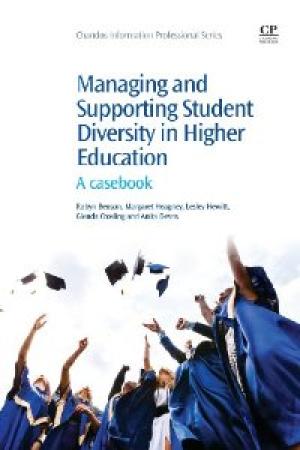
Written from an Australian higher education perspective, the information in this volume could be useful to anyone engaged in teaching, supporting, or recruiting prospective students in tertiary institutions (xi). It is a worthwhile (beneficial) resource for educators desiring to transform classroom pedagogical practices and approaches into ones that are user friendly, foster social inclusion and academic excellence, and are convergent with the pluralistic student population they serve. Drawing on the expertise of multiple authors and a carefully constructed critical educational methodology, the book is divided into three sections. The first section introduces readers to the key terms and conceptual reasoning that underpin the participatory research used throughout the text. The second section (chapters 2 through 6) consists of selected student stories or case studies that provide windows of understanding about issues students face as they engage higher education and the educational and social factors that contribute to academic success. The authors contend that student voices serve as “organic educational theorists,” and thereby reinforce the authors’ claims that inclusive pedagogies must reflect the active involvement of the learner in achieving their own learning goals. The case studies themselves were “developed over the course of a longitudinal research project that investigated how students from diverse backgrounds succeed in higher education” (20). The students represent Australia’s multicultural population and include both on-campus and distance education students. They also represent varied social-economic, ethnic, gender, and age groups. The authors state, “While participants’ backgrounds and experiences differed, they shared interrupted educational biographies with no clear pathways into higher education” (20). The authors state that “students from diverse backgrounds require more time to fully comprehend course material, to integrate new knowledge into their existing frameworks and make sense of it”(120). Other insights provide food for thought for anyone working with students facing both academic and cultural challenges. For example, higher education approaches in Australia often demand more classroom participation and discussion than what students may be accustomed to in their countries of origin. Hence, a degree of adjustment by students is required for success. Other case studies highlight the experience of nontraditional age students who began their studies in their forties. These case studies provide insights about the role of social obligation and self-reliance in their own learning goals. As one student stated, “I was never going to give up right from the start, because I wanted a good solid qualification that would get me a job” (213). Additional factors mentioned by students in support of their academic success included family support and encouragement, mentoring, stable finances, internships, and the usefulness of student services. The discussion questions found at the end of every chapter are a welcome resource for educators. These questions are insightful and could easily be used in a variety of university forums to conscientize faculty. In addressing mature students, the authors raise the following question: “How do you currently support adult learners while respecting their adultness? What changes could you make in your current practice to assist mature age students to cope with study and the demands of on their time and energy from other life responsibilities and situations?” (159). In the final chapter the authors discuss the implications of the cases for university staff and conclude with a summary of suggested strategies for managing and supporting student diversity and higher education. What make this book significant is that it not only sensitizes educators to the challenges faced by students coming from non-traditional backgrounds, but it also incorporates solid methodologies to highlight needed improvements in the classroom. Having read and experimented with the book’s ideas in my own teaching I can attest to its usefulness.
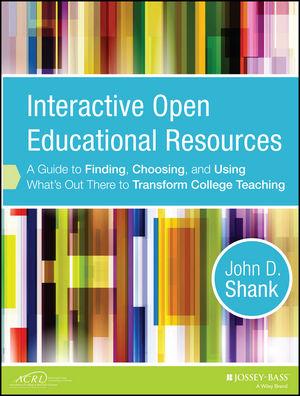
Shank’s Interactive Open Educational Resources is a welcome resource for any educator needing guidance as to how best to employ interactive learning materials (ILMs) in their classroom. The author’s style throughout is that of an encourager. He wants instructors to understand that ILMs are something more than using an online book or PowerPoint presentation. He claims that ILMs have the potential to address “significant modern-day learning challenges such as student preparedness, student engagement, and attentiveness” (7). The book is divided into three sections. The first provides an introduction, answering the question “What are Interactive Learning Materials (ILMs).” The second is devoted to “Finding ILMs.” And the last section concerns “Choosing and Using ILMs.” In the opening section, Shank defines ILMs and their relationship to open educational resources (OERs). He writes that ILMs are not easily defined because they have no universally accepted design and structure. Readers discover that ILMs should be interactive, online, and teach a specific objective or set of objectives. They should also contain one or more of the following processes – “applying, analyzing, and problem solving” (13). The second part of this book is a resource guide to locate specific ILMs. The author claims that by using specific search strategies, and key digital repositories and libraries, the process of locating ILMs is made easier. A common thread found throughout this section is that of “accessibility.” The author gives priority to sites freely available and user friendly. Shank identifies specific collections of ILMs – including online educational repositories, media sites, museums, educational institutions, and professional organizations, as well as government and nongovernment agencies. In essence, “knowing where to look will save a lot of time and bring us closer to acquiring the right kinds of resources” (23). For example, the author asserts that MERLOT is a general repository containing thousands of free, peer-reviewed, high-quality ILMs covering most disciplines. The OER Commons is a similar repository that “functions as a portal for teaching and learning materials around the world” (46). Educators are encouraged to be contributors to the repository’s resources. Beyond North America, readers are introduced to ARIADNE, a European-based repository committed to the development and exchange of learning resources, and JORUM, a British-based repository. Universities are another source of high quality ILMs. However, because of their vast numbers, the author suggests starting with institutions with known collections, or where the educator has a personal connection. Shank also expounds on a number of other educational repositories including the North Carolina Learning Object Repository (NCLOR). The author also encourages educators to give consideration to non-profit organizations like museums, professional organizations, and governmental as well as non-government agencies – groups that have “increasingly integrating interactive learning materials into their online resource offerings to educationists at all levels” (95). Among those highlighted is the Smithsonian Institution that offers innumerable educational resources. Shank encourages educators to remember the “three main areas of selection criteria – content, engagement, and design (CED) – to evaluate the quality of the identified ILMs” (31). Nonetheless, the overriding consideration should be given to content and accuracy. In the third part, the author offers suggestions for choosing and using ILMs. He encourages educators to find ILMs that are appealing and address different learning styles. He writes that students will be more likely to spend time concentrating on and engaged with ILMs if their environment is more immersive with materials, entertaining, or compelling (144). ILMs can be incorporated as course blogs, wikis, social networking sites (such as Facebook) and learning management systems (LMS). Instructors could also link ILMs to their online course syllabus. Shank contends that ILMs provide valuable feedback concerning student performance. Assessment is critical since it shows instructors whether course learning objectives are being achieved and makes the student more accountable for work they do (144). ILMs can also help struggling students to review or come to understand key concepts at their own pace (133). As the author indicates, “the more learning activities engage students, the more likely it is that the ILMs will have robust feedback” (122-123) Interactive Open Educational Resources is a cutting-edge book that provides transformative approaches to education. It is also a valuable resource guide. It will assist instructors to make a new kind of education possible in the classroom.